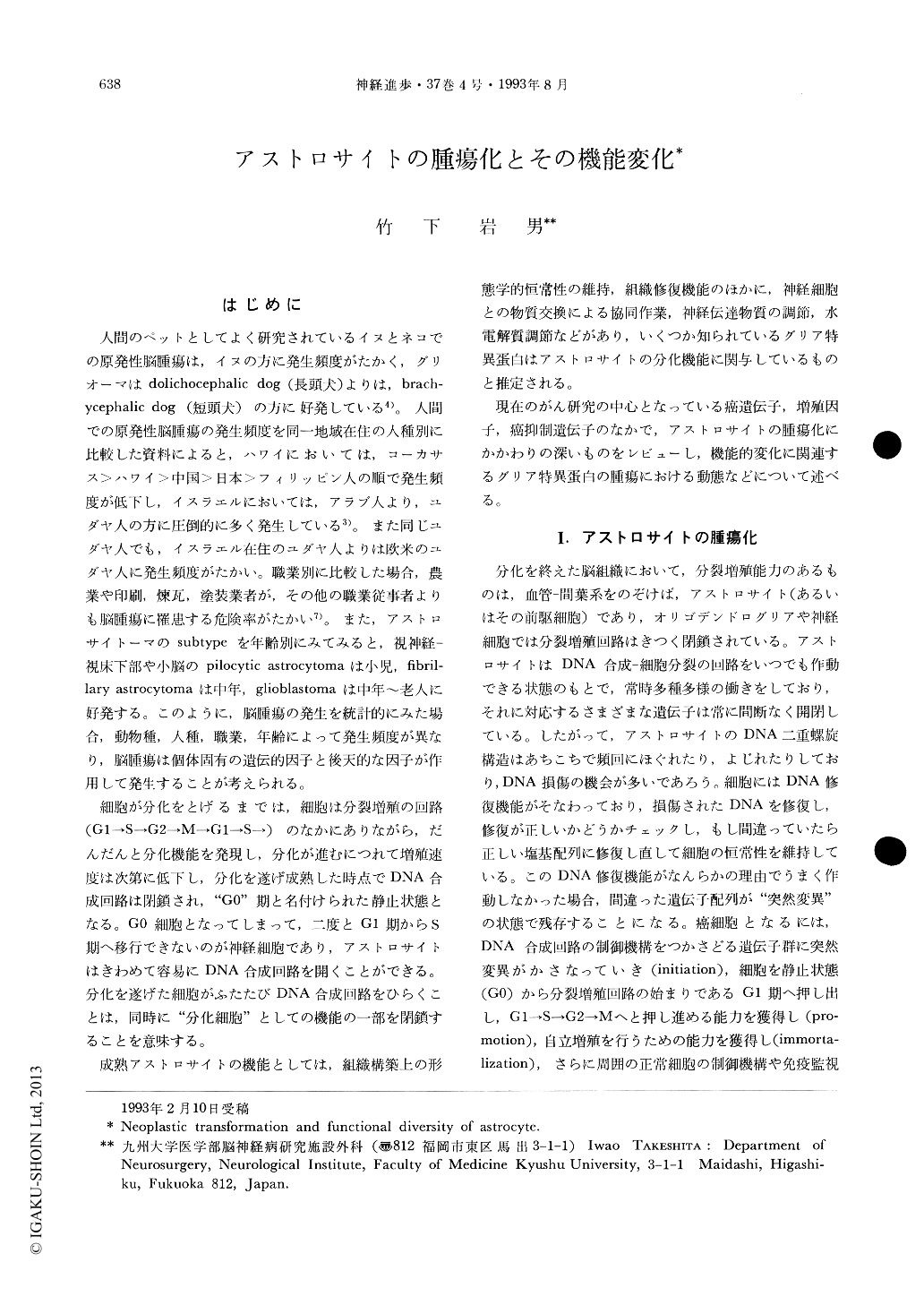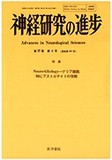Japanese
English
- 有料閲覧
- Abstract 文献概要
- 1ページ目 Look Inside
はじめに
人間のペットとしてよく研究されているイヌとネコでの原発性脳腫瘍は,イヌの方に発生頻度がたかく,グリオーマはdolichocephalic dog(長頭犬)よりは,brachycephalic dog(短頭犬)の方に好発している4)。人間での原発性脳腫瘍の発生頻度を同一地域在住の人種別に比較した資料によると,ハワイにおいては,コーカサス>ハワイ>中国>日本>フィリッピン人の順で発生頻度が低下し,イスラエルにおいては,アラブ人より,ユダヤ人の方に圧倒的に多く発生している3)。また同じユダヤ人でも,イスラエル在住のユダヤ人よりは欧米のユダヤ人に発生頻度がたかい。職業別に比較した場合,農業や印刷,煉瓦,塗装業者が,その他の職業従事者よりも脳腫瘍に罹患する危険率がたかい7)。また,アストロサイトーマのsubtypeを年齢別にみてみると,視神経-視床下部や小脳のpilocytic astrocytomaは小児,fibrillary astrocytomaは中年,glioblastomaは中年~老人に好発する。このように,脳腫瘍の発生を統計的にみた場合,動物種,人種,職業,年齢によって発生頻度が異なり,脳腫瘍は個体固有の遺伝的因子と後天的な因子が作用して発生することが考えられる。
細胞が分化をとげるまでは,細胞は分裂増殖の回路(G1→S→G2→M→G1→S→)のなかにありながら,だんだんと分化機能を発現し,分化が進むにつれて増殖速度は次第に低下し,分化を遂げ成熟した時点でDNA合成回路は閉鎖され,“GO”期と名付けられた静止状態となる。GO細胞となってしまって,二度とG1期からS期へ移行できないのが神経細胞であり,アストロサイトはきわめて容易にDNA合成回路を開くことができる。分化を遂げた細胞がふたたびDNA合成回路をひらくことは,同時に“分化細胞”としての機能の一部を閉鎖することを意味する。
Astrocyte perticipates in and regulates metabolisms of energy, electrolyte, acid-base balance and neurotransmitters, while it is ready for promptly acting and proliferating to unfavorable conditions, such as ischemia and injury. There are several proteins preferentially expresseed in astrocyte and may be engaged with the cell-specific functions. As studying the mechanism of neoplastic transformation in mammalian cells, functional loss of growth-suppressing gene (s) and gain of growth-promoting gene expression are essential for the initiation of neoplastic transformation of a normal astrocyte. Among of the known tumor suppressor genes, functional loss of retinoblastoma susceptibity (RB) gene and neurofibromatosis type 1 (NF1) gene seems to be uncommon in astrocytoma, while mutation of p53 gene are commonly occurred. The p53 protein produced by mutated p53 gene poorly binds to DNA and interferes with the binding of normal p53 protein. By binding of the normal p53 protein to DNA, the gene adjacent to the binding site is activated and expressed. The expression of the “adjacent” gene(s) seems to be important for many types of cells keeping in G0/G1 resting stage. The protooncogenes of myc, N-myc and gli are amplified in a few astrocytomas. The gene products of these oncogenes are also bind to nuclear DNA or to nuclear proteins and promote cell proliferation, although their precise mechanisms are not known.

Copyright © 1993, Igaku-Shoin Ltd. All rights reserved.


